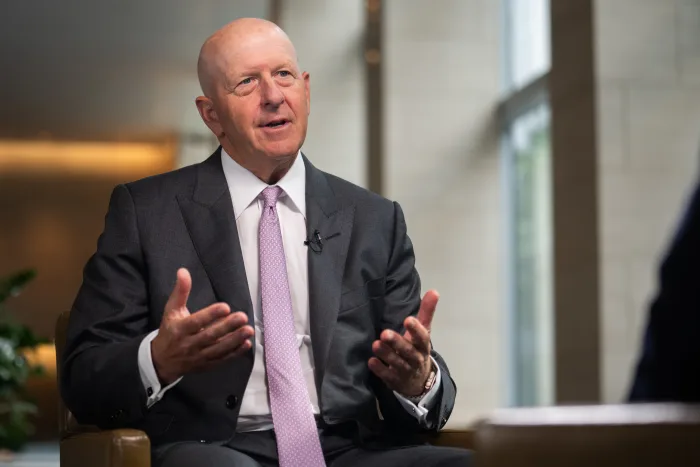Goldman Sachs has updated its economic forecast following recent moves by the Federal Reserve, which initiated its rate-cutting cycle with a 0.5 percentage point reduction last week.
The firm now expects a stronger economy in the near term and more aggressive interest rate cuts from the central bank.
The Federal Reserve’s decision to cut interest rates, driven by easing inflation and steady economic growth, has led to widespread speculation about the future direction of the US economy. Goldman Sachs responded by raising its forecast for third-quarter economic growth from 2.5% to 3%. This upward revision reflects solid performance in retail sales, industrial production, and housing starts, signaling optimism about continued economic expansion.
In addition to the economic growth forecast, Goldman Sachs adjusted its expectations for future rate cuts by the Federal Reserve. Initially predicting modest reductions, the investment bank now anticipates consecutive 0.25 percentage point cuts through mid-2025. This shift is in response to the Fed’s unexpected 0.5 percentage point rate cut last week, a larger cut than many analysts had expected.
Goldman’s revised outlook suggests the Federal Funds Rate will drop to a target range of 3.25% to 3.5% by June 2025, down from the current 4.75% to 5% range. These cuts aim to stabilize inflation while supporting economic growth, potentially preventing a recession. As inflation trends downward toward the Fed’s 2% target, some experts believe the US economy could achieve a “soft landing,” avoiding severe downturns while maintaining growth.
The Federal Reserve’s actions have been felt across financial markets, with stocks, short-term Treasury securities, and gold all reacting positively to the news. However, some experts, including Bank of America’s chief investment strategist Michael Hartnett, caution that the market’s optimistic reaction could be a warning sign of potential risks. Hartnett noted that investor enthusiasm might lead to “bubble risks” as markets factor in expected rate cuts and earnings growth through 2025.
As for consumers, the Federal Reserve’s rate cuts carry mixed consequences. On the positive side, borrowing costs for mortgages, auto loans, and credit cards are likely to decrease. However, savers may see lower returns on savings accounts and certificates of deposit. The recent cuts have already led to declines in mortgage rates, with the average 30-year fixed-rate mortgage dropping to 6.09%, its lowest level since February 2023.
Looking ahead, the Fed’s next meeting in November will be closely watched, with Goldman Sachs predicting that the central bank could implement either a 0.25 or 0.5 percentage point cut, depending on upcoming employment data.
While rate cuts might ease financial pressures for borrowers, experts like Jason Pride from Glenmede advise investors to remain cautious, particularly in equity markets. Pride suggests that while small-cap stocks may benefit from rate reductions, valuations for larger companies could be extended, signaling a potential slowdown in the current market cycle.
As the US economy navigates these changes, the ongoing rate adjustments by the Federal Reserve will continue to play a key role in shaping the financial landscape.
With input from CBS News and the Street.








